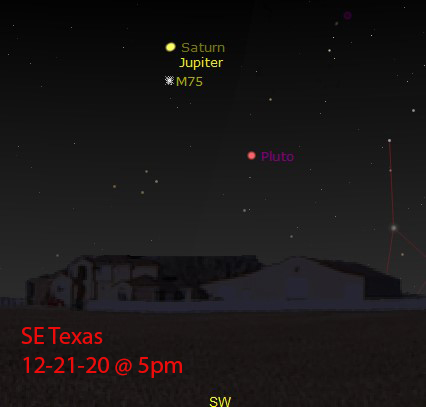By: Don Selle
Its December and as the weather cools and the toddies get hotter, all good astronomers thoughts turn to – NEW EQUIPMENT!! Which brings us to our subject for this month’s AP Corner.
 Over the last month, there have been a number of our members seeking input on intended equipment purchases to upgrade their systems, and maybe expanding their options to get into astrophotography. For instance, Jim King asked the HAS list server whether or not he would see enough visual improvement to upgrade to a Celestron Edge HD SCT (on an Alt Az mount), which would also possibly open the door to astrophotography later on.
Over the last month, there have been a number of our members seeking input on intended equipment purchases to upgrade their systems, and maybe expanding their options to get into astrophotography. For instance, Jim King asked the HAS list server whether or not he would see enough visual improvement to upgrade to a Celestron Edge HD SCT (on an Alt Az mount), which would also possibly open the door to astrophotography later on.
This type of question has multiple answers, depending on the objective of the person asking the question. As Jeff Lepp responded – “Traditional advice is buy a scope for visual or buy a scope for astrophotography but don’t buy a scope to do both.” He then went on to explain that the state of current technology and cost of astrophotography equipment makes this answer somewhat obsolete. “It all depends on what you want to do” he said.
There are several ways this could go, depending on how important astrophotography is to Jim. So, for the purposes of answering this question, I will start by answering the question as Jim asked, take into account that in astrophotography “there is always an upgrade” then finish with advice to someone who really intends to get into astrophotography. In each case the upgrades are presented in the order from lower to higher cost.
Jim’s primary question is about the quality of the Edge HD optics for visual observing. An SCT on an Alt-AZ is a very good visual telescope. The Alt-Az mount makes for comfortable observing and is easy to automate for GoTo operation. The optics on a standard SCT are designed to be easy to mass produce, with both the primary and secondary mirrors ground to a spherical shape (very forgiving) and the corrector plate designed to eliminate spherical aberration from the mirrors. The result is good images in the center of the FOV, but because the focal plane is curved, modern wide field of view eyepieces will be less focused and other aberrations like coma can be seen at the edges of the image.





 Over the last month, there have been a number of our members seeking input on intended equipment purchases to upgrade their systems, and maybe expanding their options to get into astrophotography. For instance, Jim King asked the HAS list server whether or not he would see enough visual improvement to upgrade to a Celestron Edge HD SCT (on an Alt Az mount), which would also possibly open the door to astrophotography later on.
Over the last month, there have been a number of our members seeking input on intended equipment purchases to upgrade their systems, and maybe expanding their options to get into astrophotography. For instance, Jim King asked the HAS list server whether or not he would see enough visual improvement to upgrade to a Celestron Edge HD SCT (on an Alt Az mount), which would also possibly open the door to astrophotography later on. C 891 is an edge-on spiral galaxy located 30 million light years from us, within the local supercluster. It was discovered by William Herschel in 1784. It is one of the brightest and best-known edge-on galaxies, exceeded in impressiveness only by the Sombrero galaxy M104, and NGC 4565. However, when I first viewed it several years ago I found it to be a bit more difficult to see than I expected for such a well-known galaxy. Nonetheless, once it is located it isn’t too hard to see even in a smaller telescope. I first observed it in 2014 in my 10” dob at 48x and I descibed it simply as “thin streak, with a dark lane in the middle.” I re-observed it in my 16” just weeks ago at 131x and logged “much lower surface brightness than anticipated, but easily seen direct vision; long and thin, tapering to the points from the central bulge; very obvious dust lane directly down the center; no bright central nucleus; pretty much uniform in brightness; a few stars superimposed.” NGC 891 can be seen in considerably smaller telescopes than these, though it will be more challenging, and clear dark skies certainly help (both of my quoted observations here were from the HAS dark site). Key details to notice include the long thin overall shape, and the dark dust lane bisecting the long axis of the galaxy.
C 891 is an edge-on spiral galaxy located 30 million light years from us, within the local supercluster. It was discovered by William Herschel in 1784. It is one of the brightest and best-known edge-on galaxies, exceeded in impressiveness only by the Sombrero galaxy M104, and NGC 4565. However, when I first viewed it several years ago I found it to be a bit more difficult to see than I expected for such a well-known galaxy. Nonetheless, once it is located it isn’t too hard to see even in a smaller telescope. I first observed it in 2014 in my 10” dob at 48x and I descibed it simply as “thin streak, with a dark lane in the middle.” I re-observed it in my 16” just weeks ago at 131x and logged “much lower surface brightness than anticipated, but easily seen direct vision; long and thin, tapering to the points from the central bulge; very obvious dust lane directly down the center; no bright central nucleus; pretty much uniform in brightness; a few stars superimposed.” NGC 891 can be seen in considerably smaller telescopes than these, though it will be more challenging, and clear dark skies certainly help (both of my quoted observations here were from the HAS dark site). Key details to notice include the long thin overall shape, and the dark dust lane bisecting the long axis of the galaxy.
 What You Need to Know About the Texas Star Party
What You Need to Know About the Texas Star Party

